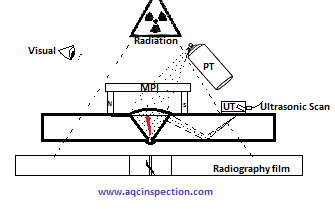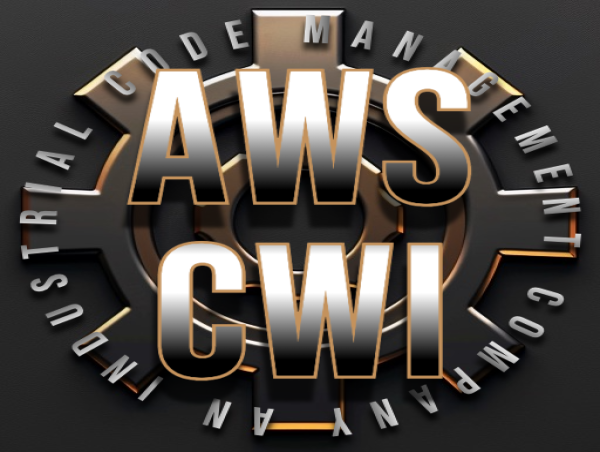The Ultimate Guide to Searching For Reliable Welding Inspection Milwaukee Experts
The Ultimate Guide to Searching For Reliable Welding Inspection Milwaukee Experts
Blog Article

Checking Out the Different Approaches and Standards of Welding Inspection for Getting Compliance and Integrity in Engineering Applications
The significance of welding inspection in design applications can not be overstated, as it functions as an important protect for ensuring architectural integrity and conformity with industry criteria. Various techniques, consisting of aesthetic assessment and progressed non-destructive testing methods, offer important insights into the top quality of welds. Adherence to established regulatory standards such as those from AWS and ASME develops a framework for accountability and excellence. Nonetheless, the landscape of welding evaluation is constantly progressing, prompting a better evaluation of emerging methods and their effects for engineering reliability. What might these growths entail for future jobs?
Relevance of Welding Evaluation
Welding inspection plays a crucial role in making sure the stability and safety and security of bonded structures. The significance of welding examination can not be overemphasized, as it serves as a safeguard versus potential failings that might result from inadequate welding techniques.
Additionally, welding evaluation is important for maintaining quality guarantee throughout the welding process. It makes certain that the welds fulfill the required mechanical and physical properties required for their desired applications. Normal assessments likewise cultivate a culture of liability and constant improvement within welding procedures, urging adherence to finest methods and sector criteria.
In managed markets such as production, building and construction, and aerospace, strict welding examination protocols are mandated to abide by legal and security demands. Inevitably, effective welding examination not only safeguards human life and home yet additionally enhances the durability and dependability of welded structures, making it a crucial element of engineering and building.

Usual Welding Examination Approaches
A selection of examination approaches are utilized to examine the high quality and integrity of welds, each tailored to spot particular types of defects. Amongst the most common approaches is aesthetic examination, which entails a detailed examination of the weld surface area to determine noticeable imperfections such as splits, undercuts, and inadequate blend. This method is frequently the first action in the assessment process as a result of its simplicity and cost-effectiveness.
Another commonly used approach is radiographic assessment, where X-rays or gamma rays penetrate the weld to disclose inner flaws. This technique is particularly efficient for spotting porosity and additions within the weld product. In a similar way, ultrasonic screening utilizes high-frequency acoustic waves to determine inner problems, offering a detailed evaluation of the weld's integrity.
Moreover, magnetic particle assessment is utilized for ferromagnetic materials, enabling the detection of surface area and near-surface flaws by applying magnetic areas and observing particle patterns. Last but not least, color penetrant testing involves applying a fluid dye to the weld surface area, disclosing cracks and other interruptions upon inspection. Each of these techniques plays a vital duty in guaranteeing weld high quality and compliance with industry requirements
Non-Destructive Checking Strategies
Non-destructive screening (NDT) strategies are vital devices in the analysis of weld top quality, allowing inspectors to evaluate the stability of bonded joints without creating damages to the products. Different NDT techniques are employed to identify potential problems, guaranteeing that welds satisfy the needed standards for security and performance.
One of the most prevalent techniques is ultrasonic screening (UT), which makes use of high-frequency acoustic waves to discover internal flaws such as cracks or voids. Radiographic screening (RT) utilizes X-rays or gamma rays to produce pictures of welds, exposing any gaps within the material. Magnetic particle screening (MT) works for finding surface and near-surface defects in ferromagnetic products through the application of magnetic areas and contrasting fragments.
Fluid penetrant testing (PT) is another extensively utilized approach that includes applying a color to the our website surface of the weld, which seeps right into any cracks, making them noticeable under ultraviolet light. Each of these methods gives one-of-a-kind advantages and constraints, and the choice of a suitable technique is essential to accomplishing precise evaluations of weld integrity. Inevitably, the application of NDT strategies dramatically adds to the dependability and safety of design applications.

Governing Specifications and Compliance
In the world of welding evaluation, adherence to governing standards and compliance is extremely important to make sure the safety and dependability of bonded structures (Welding Inspection Milwaukee). Different companies, consisting of the American Welding Society (AWS), the American Culture of Mechanical Designers (ASME), and the International Organization for Standardization (ISO), have developed standards that regulate welding techniques and inspection procedures. These requirements provide a framework for top quality guarantee, describing the needed credentials for inspectors and the methodologies for examining weld integrity
Conformity with these regulative standards not only enhances the structural integrity of bonded assemblies however additionally alleviates dangers related to failings, which can have disastrous consequences. Evaluations need to be carried out making use of specified treatments, consisting of visual, ultrasonic, and radiographic techniques, to make certain that welds satisfy defined requirements.
Furthermore, adherence to these my review here criteria is frequently needed by regulation, especially in markets such as aerospace, building, and manufacturing. Normal audits and qualifications are vital to maintain compliance, thus fostering a society of safety and security and high quality within organizations. Inevitably, regulative criteria and compliance serve as the foundation of dependable welding inspection methods, ensuring that crafted frameworks satisfy both performance assumptions and security needs.
Finest Practices for Welding Examination
While preserving compliance with regulatory requirements is critical, executing ideal practices for welding examination additionally boosts the safety and stability of bonded structures. Efficient welding inspection begins with thorough planning, which consists of understanding the particular requirements of each job and ensuring inspectors are well-trained in suitable methods and requirements.
Making use of an extensive inspection list assists to make sure all crucial facets are examined, such as weld dimension, penetration, and visual flaws. Non-destructive screening (NDT) strategies, such as ultrasonic or radiographic testing, ought to be utilized where appropriate, offering a much more thorough assessment of weld top quality without compromising the integrity of the materials.
Documentation plays a considerable role in best practices; preserving precise records of assessments, including photos, test results, and compliance reports, guarantees accountability and facilitates future assessments. In addition, cultivating a society of open interaction in between examiners and welders can result in early recognition of possible concerns, advertising instant restorative actions.
Conclusion
In summary, the implementation of extensive welding examination techniques and adherence to established criteria are crucial for making sure compliance and integrity in design applications - Welding Inspection Milwaukee. Methods such as aesthetic assessment, radiographic screening, and ultrasonic testing act as essential tools in keeping and identifying defects quality control. By cultivating a culture of accountability and quality, organizations can enhance the honesty and longevity of bonded structures, inevitably adding to the safety and efficiency of engineering tasks
Various approaches, consisting of aesthetic evaluation and progressed non-destructive testing methods, provide crucial understandings right into the top quality of welds.Welding evaluation plays an important role in making certain the honesty and security of bonded structures.A range of inspection techniques are used to analyze the high quality and honesty of welds, each customized to spot specific types of flaws.An additional widely used technique is radiographic examination, where X-rays or gamma this page rays penetrate the weld to disclose interior flaws.In the world of welding evaluation, adherence to regulative standards and compliance is vital to ensure the security and integrity of bonded structures.
Report this page